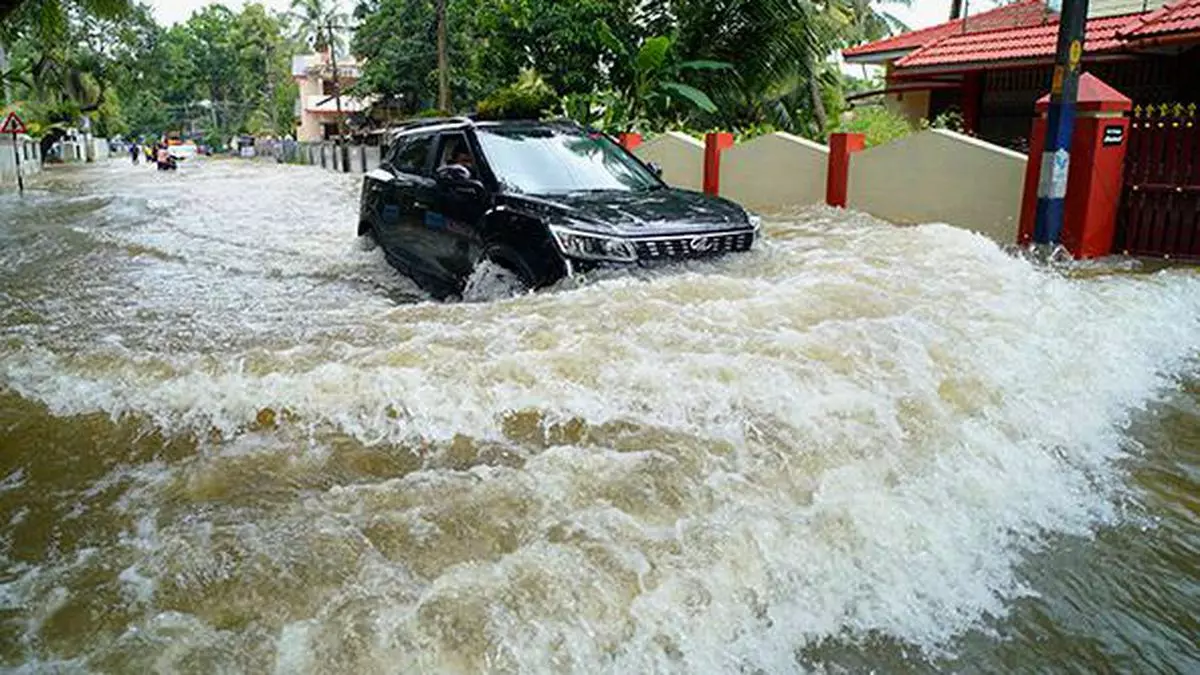
Asia was the world’s most disaster-hit region from weather, climate and water-related hazards in 2023, the World Meteorological Organisation (WMO) said in its “State of the Climate in Asia 2023” report.
Floods and storms caused the highest number of reported casualties and economic losses, whilst the impact of heatwaves became more severe.
The report, one of a series of WMO regional State of the Climate reports, was released during the 80th session of the Commission in Bangkok, Thailand on Tuesday.
In 2023, the onset of the Indian summer (south-west)monsoon was delayed. The monsoon seasonal rainfall, averaged over India as a whole, was 94 per cent of its climatological normal for the 1971–2020 period, the report said.
2nd consecutive year
Below-normal rainfall during the south-west monsoon season led to a precipitation deficit in many parts of the Indian subcontinent. The monsoon seasonal rainfall was about 6 per cent below the 1971–2000 average.
For the second consecutive year, certain regions in south-west India, the Ganges catchment, and the lower course of the Brahmaputra received less-than-normal precipitation, it said.
In 2023, the mean temperature over Asia was 0.91 °C above the 1991–2020 reference period, the second highest on record. Many parts of the region experienced extreme heat events in 2023. Japan experienced its hottest summer on record, the WMO said.
Glaciers in high-mountain Asia have lost significant mass over the past 40 years, at an accelerating rate. In 2023, record-breaking high temperatures and drier conditions in the Eastern Himalayas and the Tien Shan (mountain range) exacerbated mass loss.
Clear warming trend
The ocean around Asia witnessed an overall warming trend since the time series began in 1982. In 2023, sea-surface temperature anomalies in the north-west Pacific Ocean were the highest on record. South-west China suffered from a drought, with below-normal precipitation levels nearly every month of 2023.
Essential winter precipitation was also below normal in the Hindu Kush region, and the rains associated with the Indian summer monsoon were insufficient, the report said.
The report said over the long term, a clear warming trend emerged in Asia in the latter half of the twentieth century. In the two recent sub-periods (1961–1990 and 1991–2023), Asia, the continent with the largest land mass extending to the Arctic, warmed faster than the global land and ocean average.
“This indirectly reflects the fact that the temperature increase over land is larger than the temperature increase over the ocean…. The warming trend in Asia in 1991–2023 was almost double the warming trend during the 1961–1990 period, and much larger than the trends of the previous 30-year periods,” it said.
Atmosphere reacts slow to El Nino
The ocean area of WMO Regional Association has shown an overall surface ocean warming trend since 1982. In 2023, the area-averaged sea surface temperature anomalies were the warmest on record in the north-west Pacific Ocean, whereas the values in the Indian Ocean were below the record values reached in 2020, the report said.
In 2023, the global average sea level continued to rise at a sustained rate (3.43 ± 0.3 mm/year over the period from January 1993 to May 2023) in response to ocean warming (via thermal expansion) and the melting of glaciers, ice caps and ice sheets. However, the rate of rise is not the same everywhere, the report said.
On El Nino, the WMO said the atmosphere was slower to respond, and it was not until early September that El Niño conditions were well established in both the atmosphere and ocean.
Also, a positive Indian Ocean Dipole (IOD) developed during August 2023 and peaked in October. As the year closed, the IOD remained positive.
Extreme events
Referring to extreme events in 2023, the report said a total of 17 named tropical cyclones formed over the western North Pacific Ocean and the South China Sea, but they were significantly below the 1991–2020 average of about 25.
In the North Indian Ocean, six tropical cyclones formed over the region with Cyclone Michaung making a landfall in South Andhra Pradesh (the south-eastern part of India) on December 5 leading to 22 casualties.
In June and July, several flood and storm events resulted in at least 599 reported deaths across India, Pakistan and Nepal due to flooding, landslides and lightning, the WMO said. July and August witnessed landslides in India due to intense monsoon rains. In August, widespread floods and landslides struck multiple States in India, including Himachal Pradesh, and Uttarakhand, claiming 25 lives and causing extensive damage to infrastructure and agriculture.
On the other hand, severe heatwaves in April and June resulted in about 110 fatalities due to heatstroke.
Crime Today News | Business & Economy
Source | Powered by Yes Mom Hosting





